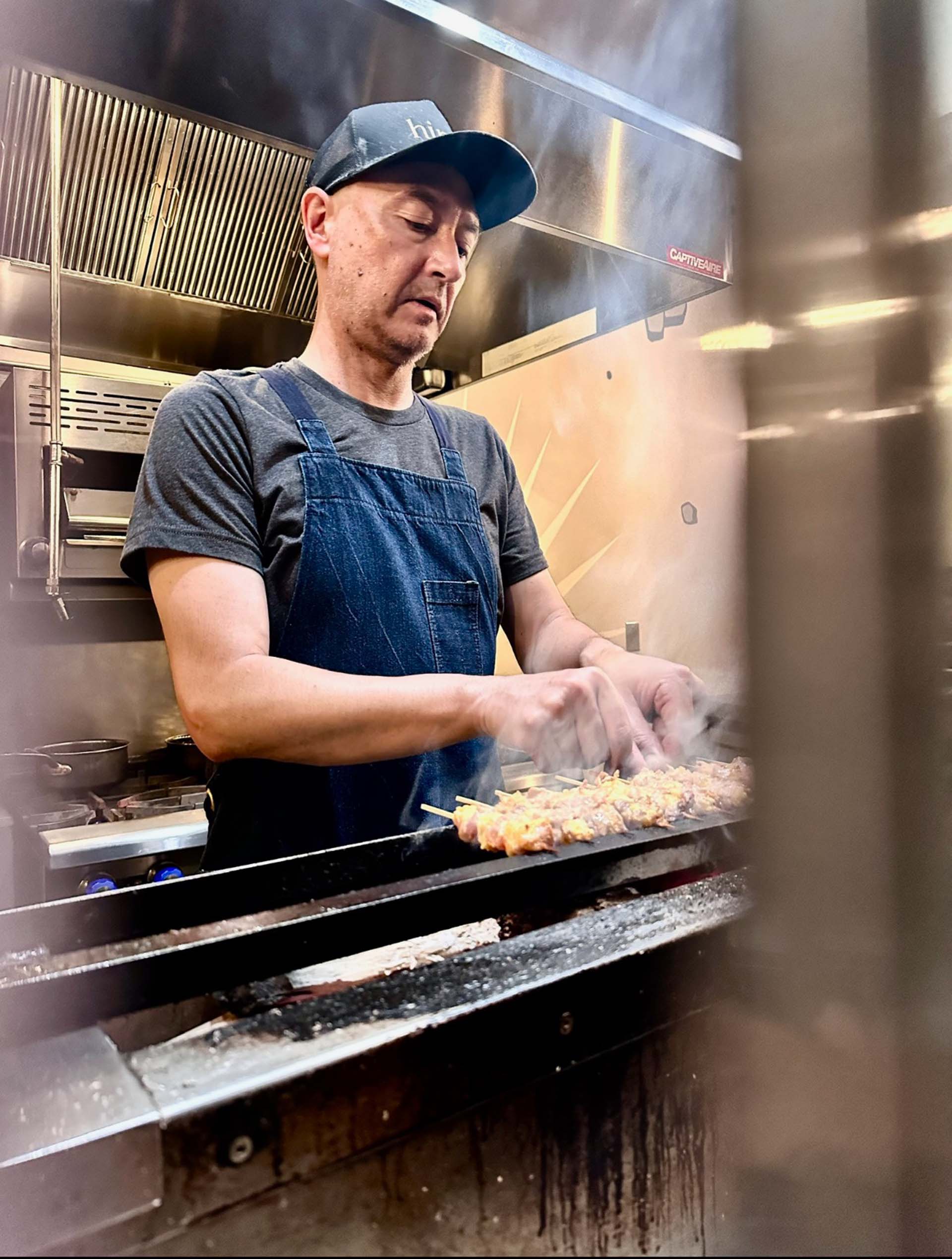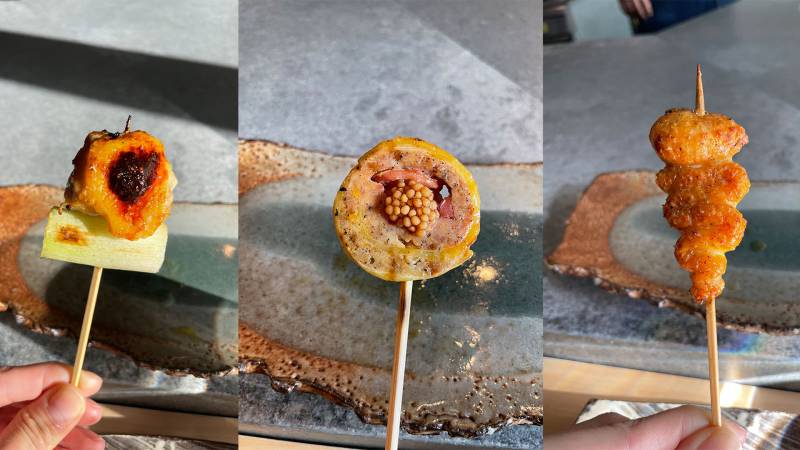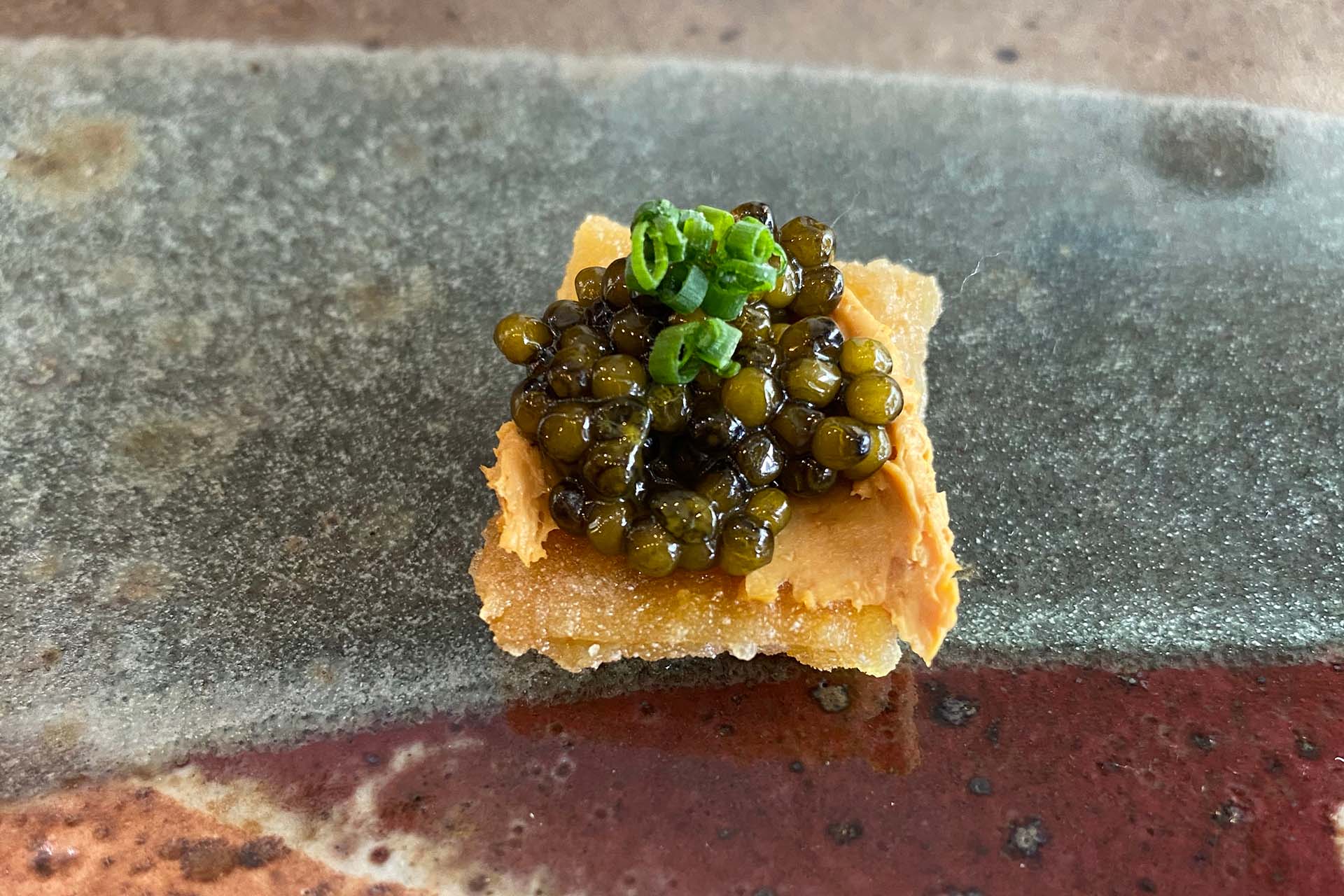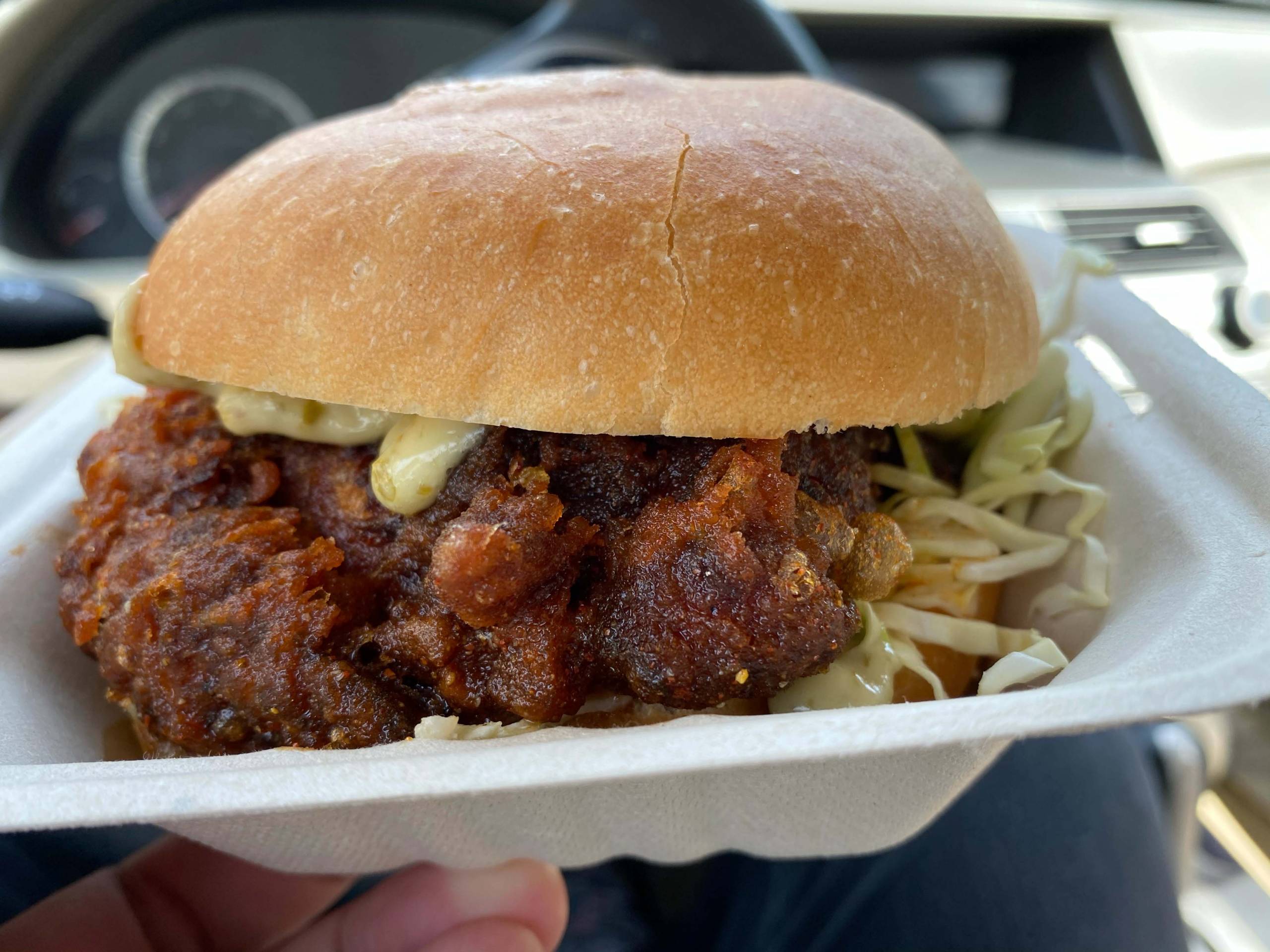When Hina Yakitori first opened on Divisadero Street in 2019, San Francisco’s general dining public had a hard time making heads or tails of the place. Here, it seemed, was a restaurant specializing in the kind of grilled chicken skewers you could find for $5 or $6 a pop at any izakaya in town. But at Hina, there wasn’t any a la carte menu at all — just an “omakase style” tasting menu that would run you well over $100 a person for about half a pasture-raised chicken’s worth of food.
As far as anyone could tell, it was the first restaurant of its kind in the U.S.
Of course, even back in 2019, anyone who’d eaten at a high-end yakitori restaurant in Japan understood, immediately, what kind of restaurant Hina was striving to be. And anyone who had eaten at chef Tommy Cleary’s earlier, more casual version of Hina in Oakland understood that Cleary was a chicken magician — and that once you saw, as I’d seen, how delicious he could make the “crisp-edged, earthy chicken heart and the fatty, cartilaginous tail,” you could never again think of grilled chicken as a boring menu option.
But now, after four years and a host of accolades, Hina Yakitori — or this iteration of it, at least — is shutting it down. Last week, the restaurant announced that its last day of dinner service will be Aug. 31.

Cleary says the ownership group’s decision to close can largely be attributed to a particularly brutal July when, for the first time in the four years since Hina opened, the restaurant had empty seats even on Friday and Saturday nights. “It just fell off a cliff,” he says.





